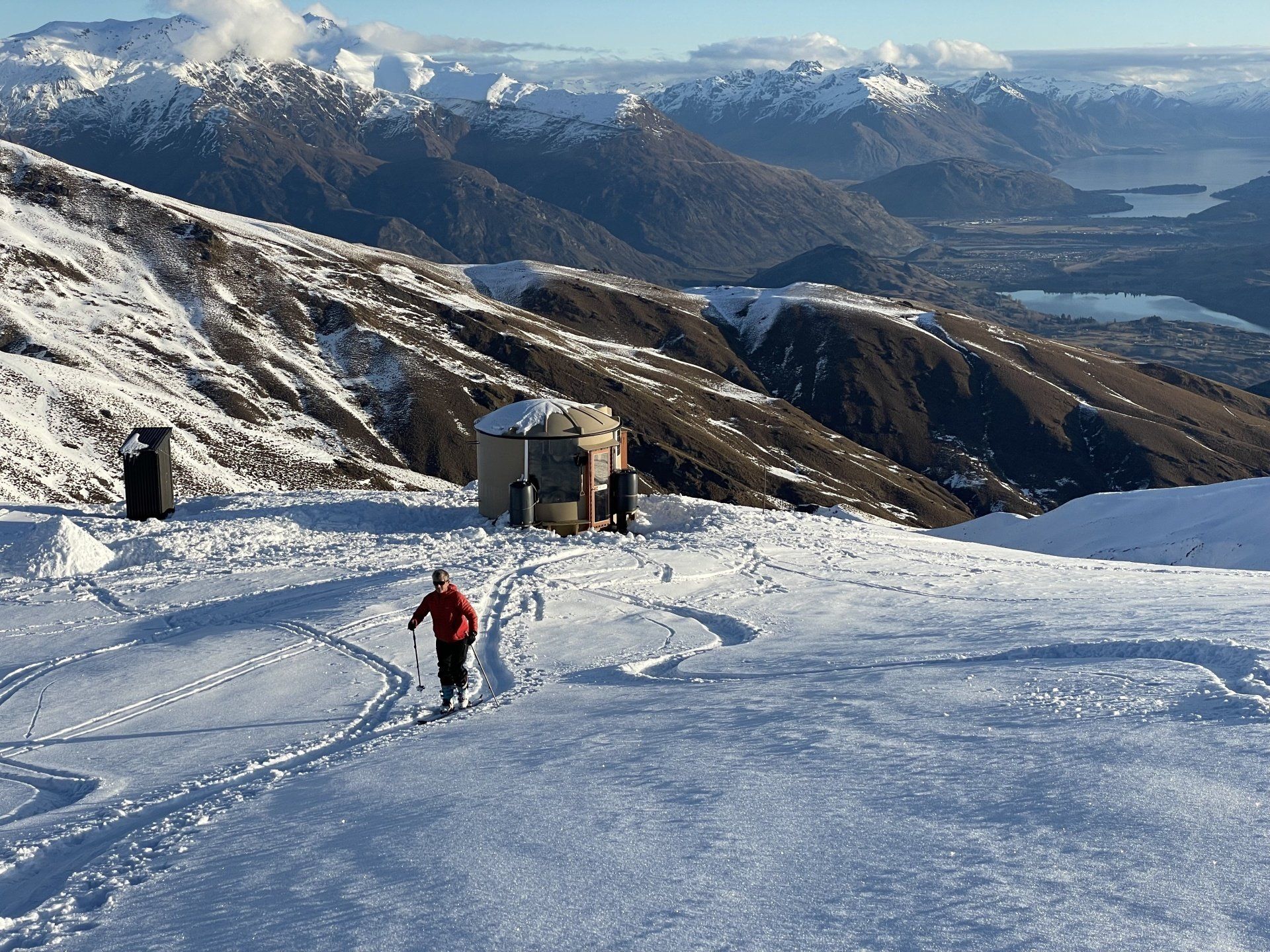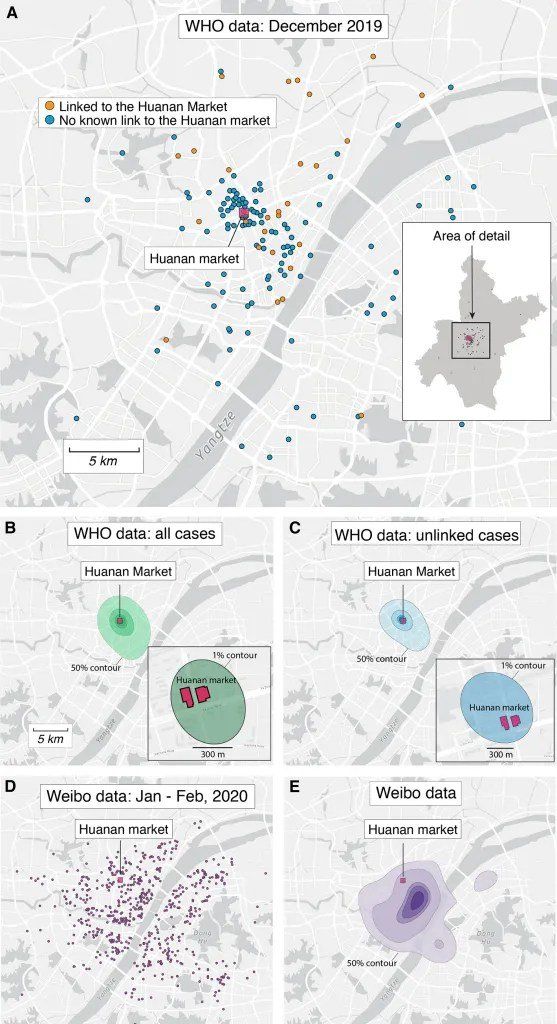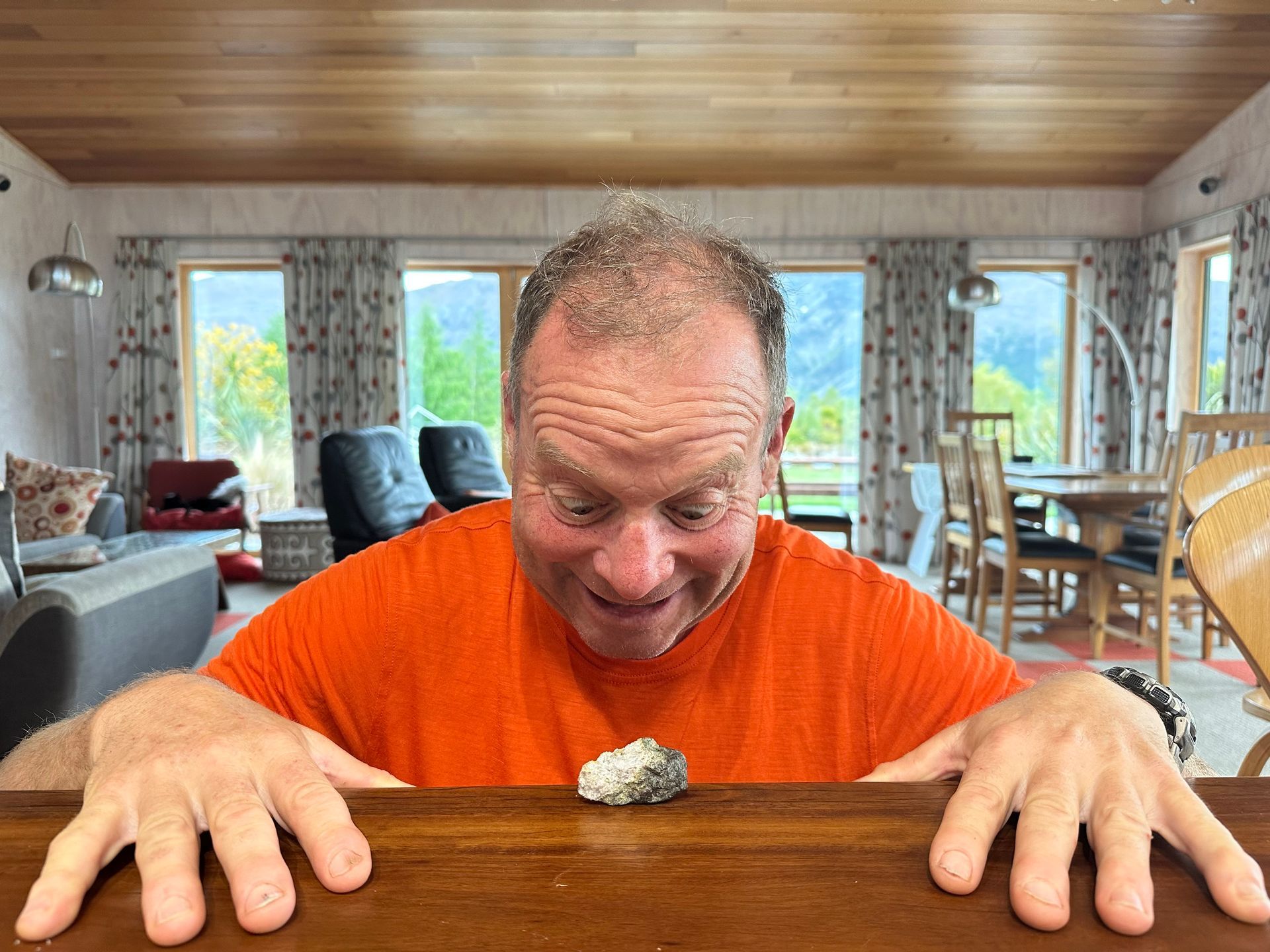COVID-19 Origins & Motivations


When in Rome, do as the Roman s do…modified for Gibbston. One must make the most of the snow and when the weather is sunny.
This week two papers were published in Science (a highly regarded scientific journal) which suggest that the Huanan Wet Market (a market selling live animals to be eaten) in Wuhan was the most likely origin for COVID-19. The earliest cases of COVID-19 (from December 2019) cluster strongly around the market (see the figure below).
Notably, two co-authors of one of the papers (Kristian Andersen of Scripps Oceanography Institute, San Diego and Michael Worobey of the University of Arizona) have changed their minds over the last two years, from suggesting virus engineering in a laboratory was a likely source in 2020, to now thinking that the Wet Market is by far the most plausible origin. Andersen wrote to Fauci in 2020, expressing his concern about a viral engineering origin. Worobey was one of 18 experts on a letter to Science in 2021 asking for a more thorough investigation of the possibility of viral escape.
Escape of an engineered virus from a lab was thought possible because of the presence in the city of the Wuhan Institute of Virology which houses China’s first Biosafety Level 4 laboratory. Level 4 labs handle the most dangerous pathogens for which there are few available vaccines or treatments, and the Wuhan facility studies coronaviruses from bats, although there has never been any concrete evidence they were studying SARS-COV-2 (the name of the COVID-19 virus).
Of 41 people hospitalised with unknown pneumonia by 2 January 2020, later identified as SARS-COV-2, 27 (66%) had direct exposure to the Huanan Wholesale Seafood Market. It is considered these reports were unbiased because, at the time, no one was considering the market as a potential cause of illness. Further, a subsequent systematic review of all cases notified to China’s National Notifiable Disease Reporting System by hospitals in Wuhan as part of a joint WHO-Chinese global study of origins of SARS-CoV-2 showed that 55 of 168 of the earliest known COVID-19 cases were associated with this market. Further, there is no clustering of the cases in relation to the Wuhan Institute of Virology.
Unfortunately, once the market was identified as a likely source of disease, it was closed down and all the animals killed so there is no possibility of identifying which animal was the source of the disease, which would be a conclusive piece of the puzzle. However, virus fragments were recovered from multiple surfaces within the market. The virus most likely originated in bats, but was then passed on to humans through an intermediary animal, which may have been civet cats, racoon dogs or badgers (live bats were not for sale at Huanan but these other animals were).

( A ) Locations of the 155 cases we extracted from the WHO mission report. Inset: map of Wuhan with December 2019 case indicated with gray dots. In both the inset and the main panel the location of the Huanan market is indicated with a red square. ( B ) Probability density contours reconstructed by a kernel density estimate (KDE) using all 155 COVID-19 cases locations from December 2019. The highest density 50% contour marked is the area for which cases drawn from the probability distribution are as likely to lie inside as outside. Also shown are the highest density 25%, 10%, 5%, and 1% contours. Inset showing an expanded view and the highest density 1% probability density contour. ( C ) Probability density contours reconstructed using the 120 COVID-19 cases locations from December 2019 that were unlinked to the Huanan market. ( D ) Locations of 737 COVID-19 cases from Weibo data dating to January and February of 2020. ( E ) The same highest probability density contours (50% through 1%) for 737 COVID-19 case locations from Weibo data.
The second of the papers looked at the diversity of the virus genome (the sequence of the DNA that makes up the virus) in the early COVID-19 cases. I would hazard a guess that never before has the genome of a virus been so well studied as COVID-19 through this epidemic. They found that there were at least two events of transmission, interpreted as between animals and humans, because there were two major virus genome lineages.
Large teams of researchers who worked on the two papers – thirty people from twenty countries. The studies are an indirect response to a WHO-commissioned report on the pandemic’s origins that was published in March 2021 which ranked four possible explanations of the origin of COVID-19:
- Viral leap from a host species to humans via an intermediary animal – most likely
- Direct jump from an animal host to a human – possible to likely
- Surface transmission from frozen food products – possible
- Leak from a lab – unlikely
After the WHO-commissioned report was published, Worobey and numerous other researchers called for more thorough investigation (as mentioned above) because they were not convinced there was enough data available to make any reasonable conclusions. Now Worobey says, the new evidence has “…moved me to the point where now I also think it’s just not plausible that this virus was introduced in any other way than through the wildlife trade at the Huanan market.”
Why all the interest in the origin of COVID-19? Public health physicians want to use the knowledge to prevent similar events. Scientists want to understand viral evolution within and between species, including to help public health physicians in virus management. The rationale of politicians is not necessarily as virtuous. Put simply, Donald Trump wanted to blame China for COVID-19 and the Chinese government doesn’t want to be at fault. Trump’s rhetoric, including referring to the “China virus” and “kung flu”, is credited with inflaming anti-Asian sentiment in the USA. Joe Biden is far less inflammatory than Trump but has continued to push China to further investigate COVID-19 origins.
China has stated previously that they consider the virus originated outside their country and was transmitted on foodstuffs arriving into China. They have suggested that COVID-19 moved between species naturally, rather than transmission being driven within the Wet Market environment. The Chinese government would appear to be out of luck with their disclaimers. COVID-19 most likely originated in a market rather than a lab but there is little doubt in most scientists’ minds that it originated in China.
In a lot of ways I find the politician’s motivations less clouded. Politicians want to be more popular than the next politician, plain and simple. They talk and act in ways they think will make them more popular. Trump’s style was being divisive and aggressive, so blaming another country and a people for the pandemic suited his stance. Biden is more moderate in his approach, so he is trying to play both sides – not wanting to directly blame China, but also not wanting to let them off the hook. Xi apparently wants to be leader for the long term (life?) in China, and taking responsibility for a global and national megadeath event wouldn’t seem be likely enhance one’s approval ratings. Particularly given that transfer from animals to humans implies poor regulations or health practices associated with the Huanan Market.
The calls for better understanding of COVID to reduce the chances of future pandemics, seem more convoluted and far-fetched to me than political bullet-dodging. Better understanding is interesting, without a doubt. But is it essential?
We already know that viruses spread ‘zoonotically’ – between animals and humans. We know that bringing large numbers of animals into contact with each other increases the chances of infection between animals, and bringing different species into contact with each other (such as in a wet market) increases the chances of infection across species (including to humans who are at the market). There are many ethical and logical arguments already harnessed against wet markets but they are still common in Asia. Why would proof that COVID originated in the Huanan market change anything?
We already know that there are risks associated with working with viruses in laboratories, which is why there are different levels of containment with higher stringency for more risky diseases and a plethora of regulations and protocols around them (which humans follow variably). Why would knowing that COVID leaked from a lab change anything, unless it could be proven the virus ‘leaked’ in a new way for which protocols have not yet been developed? There will always be a chance of escape – that’s what ‘risk’ means – it is about probabilities.
It could be that most people’s motivations are actually very similar – everyone wants to keep doing what they have been doing. Politicians want to keep their political roles. Scientists want to keep their science jobs so need to demonstrate the need for more research. Public health personnel want their existence to be justified through identifying new approaches that might reduce risk to the public. So everyone tells the story of the search for the origins of COVID-19 in a way that emphasises the need for their own role to continue. Or am I just jaded?







